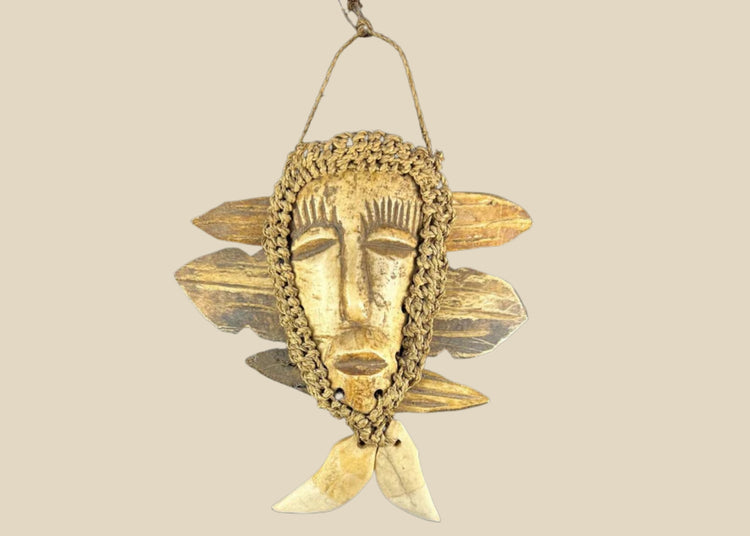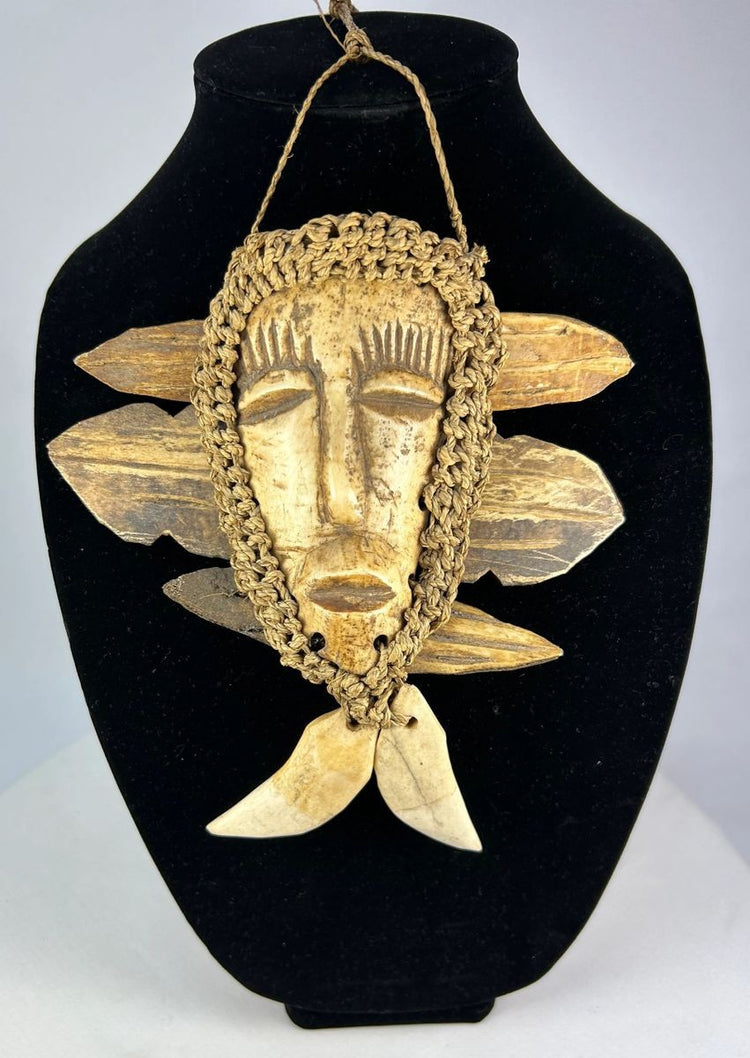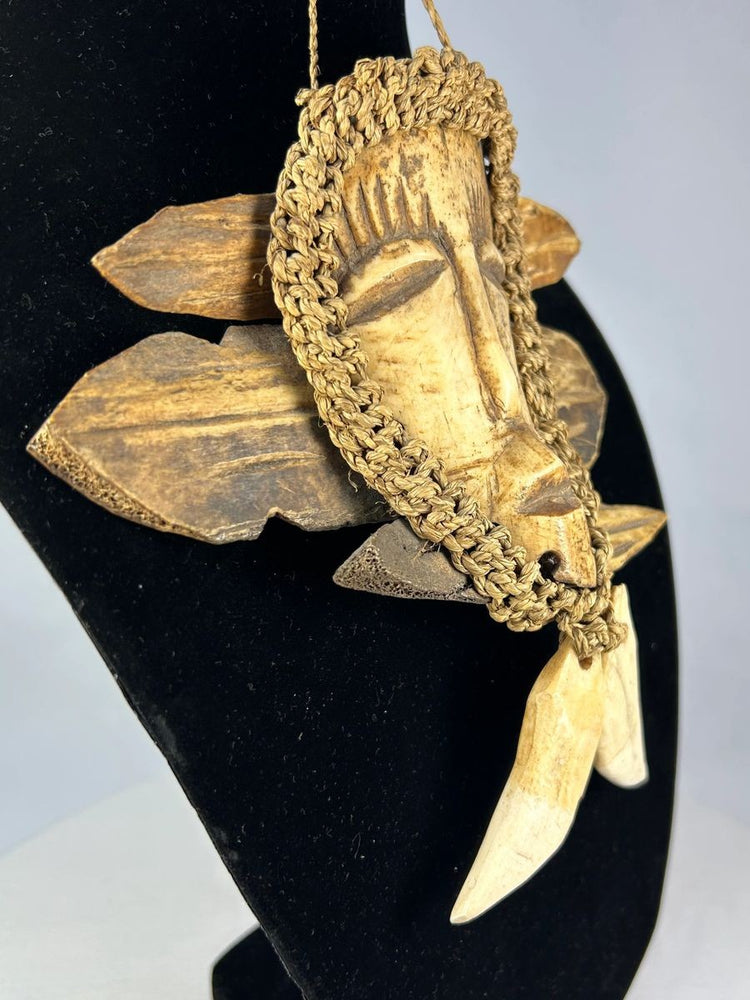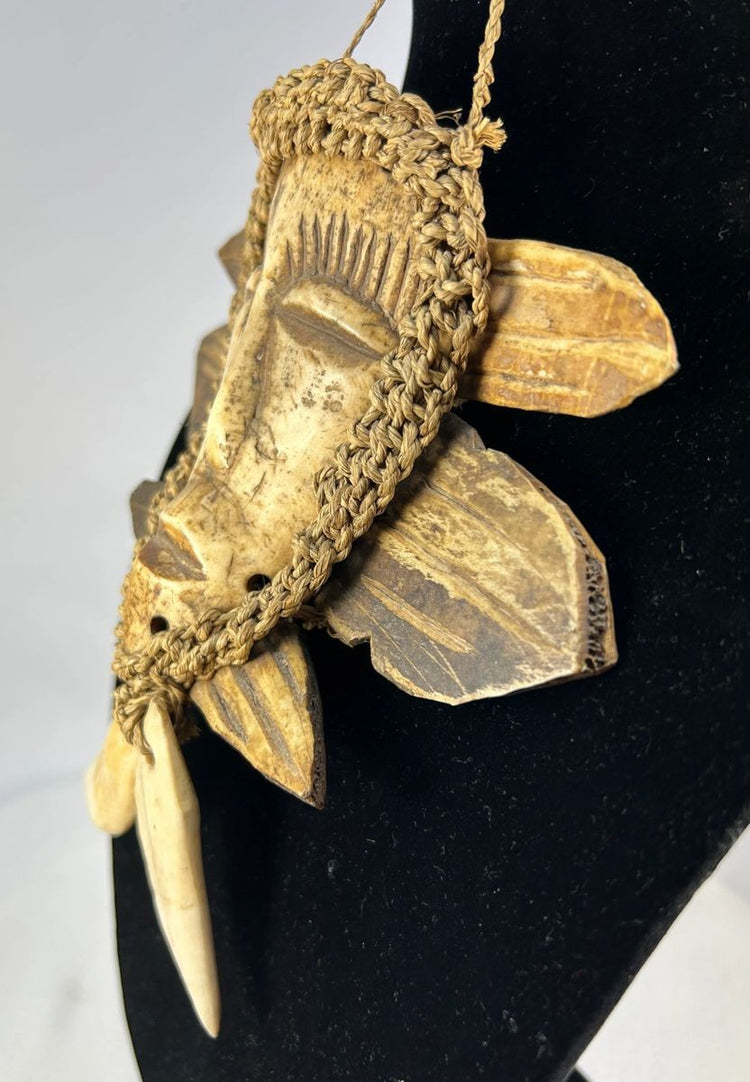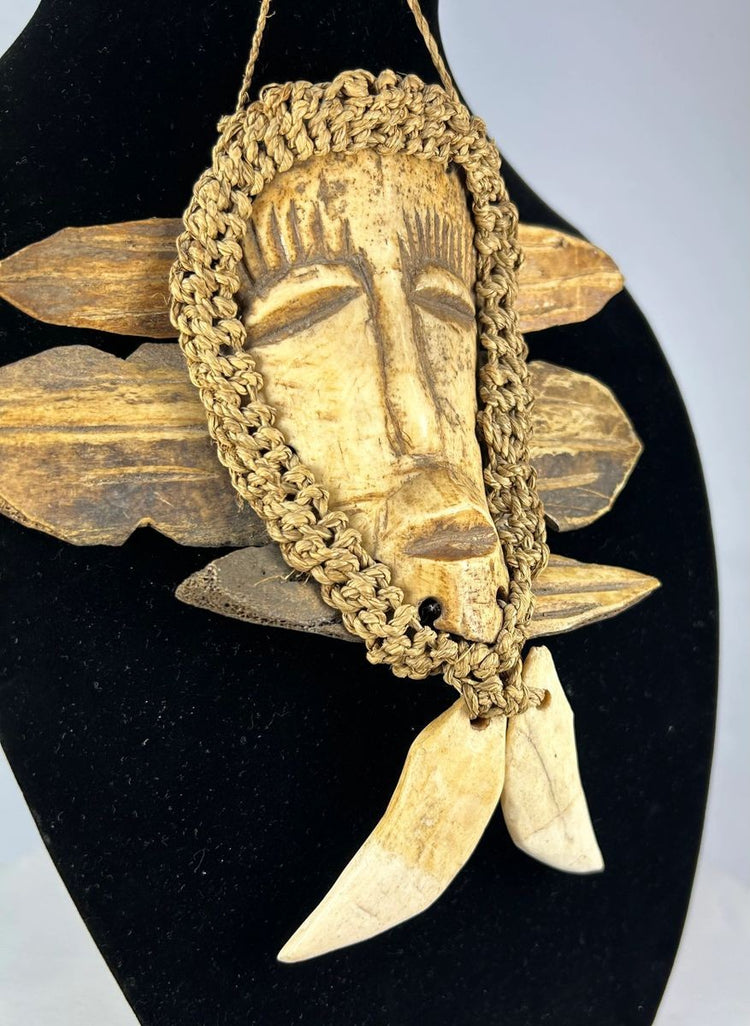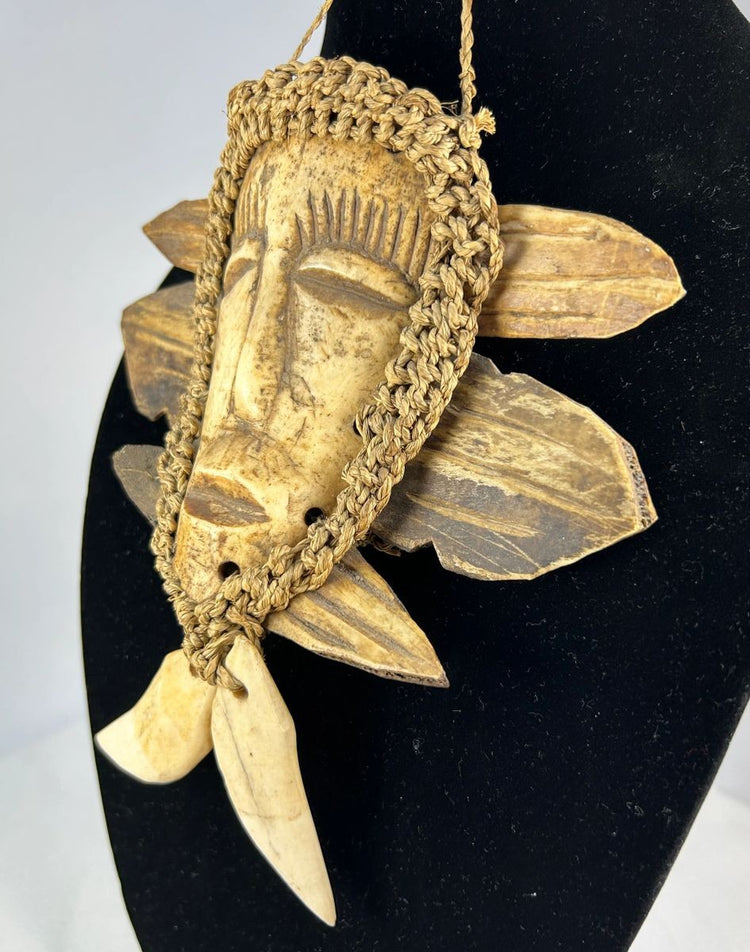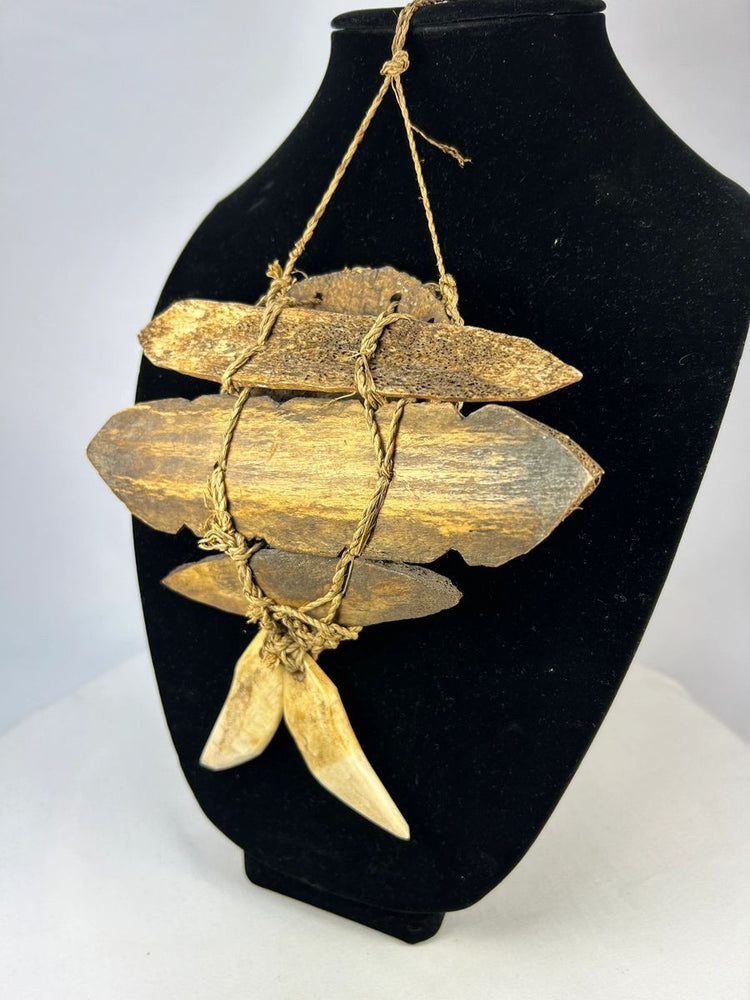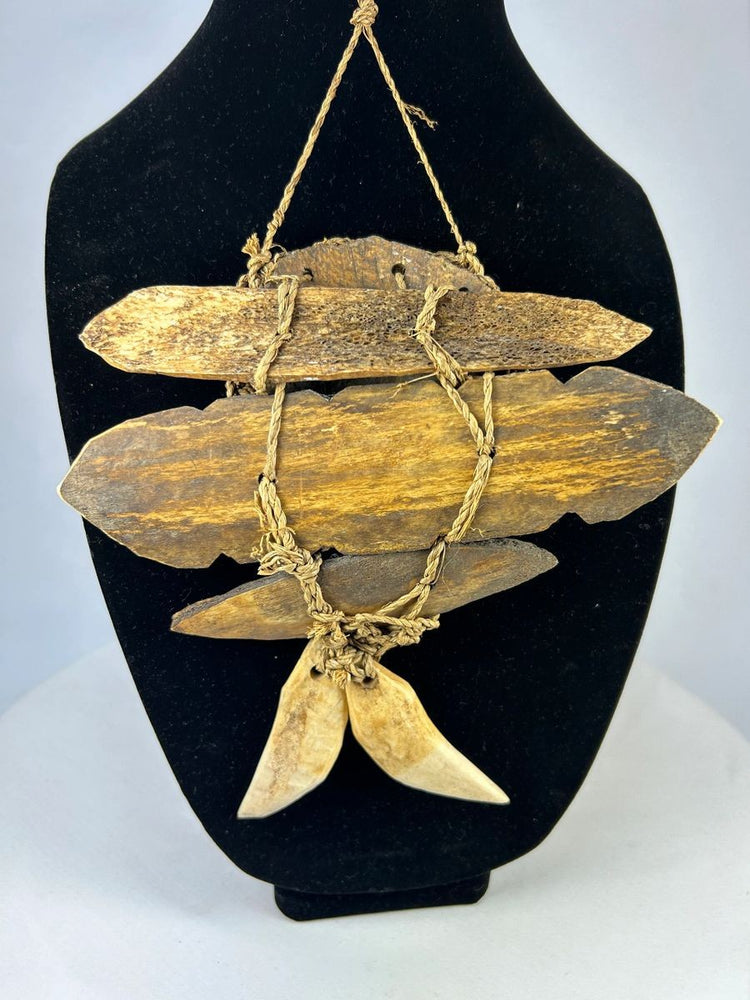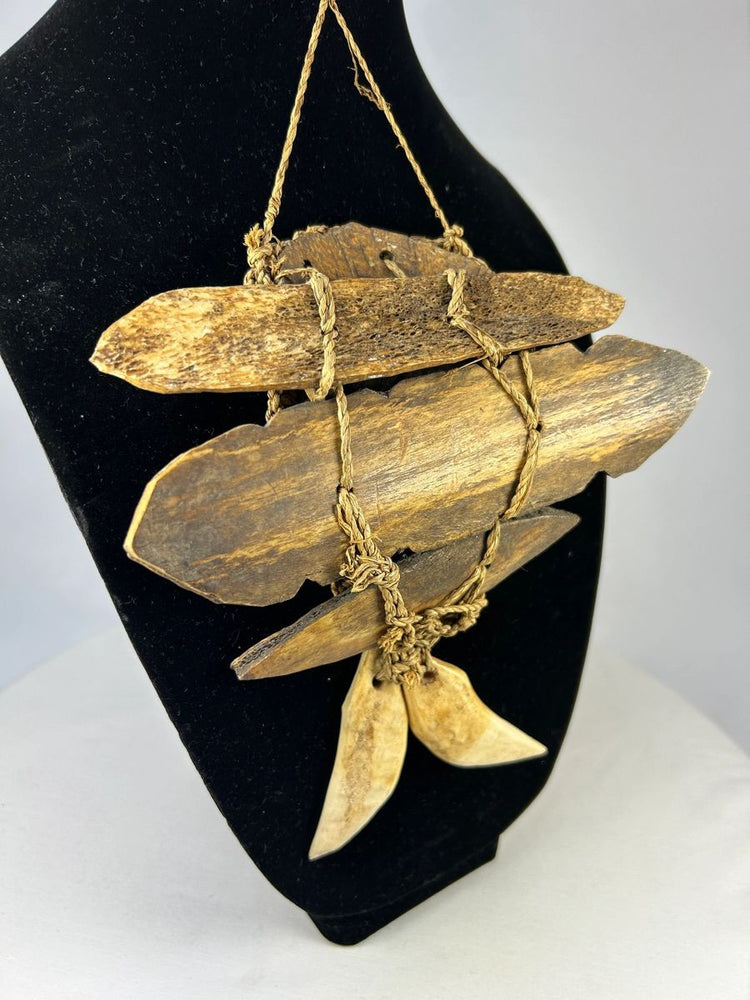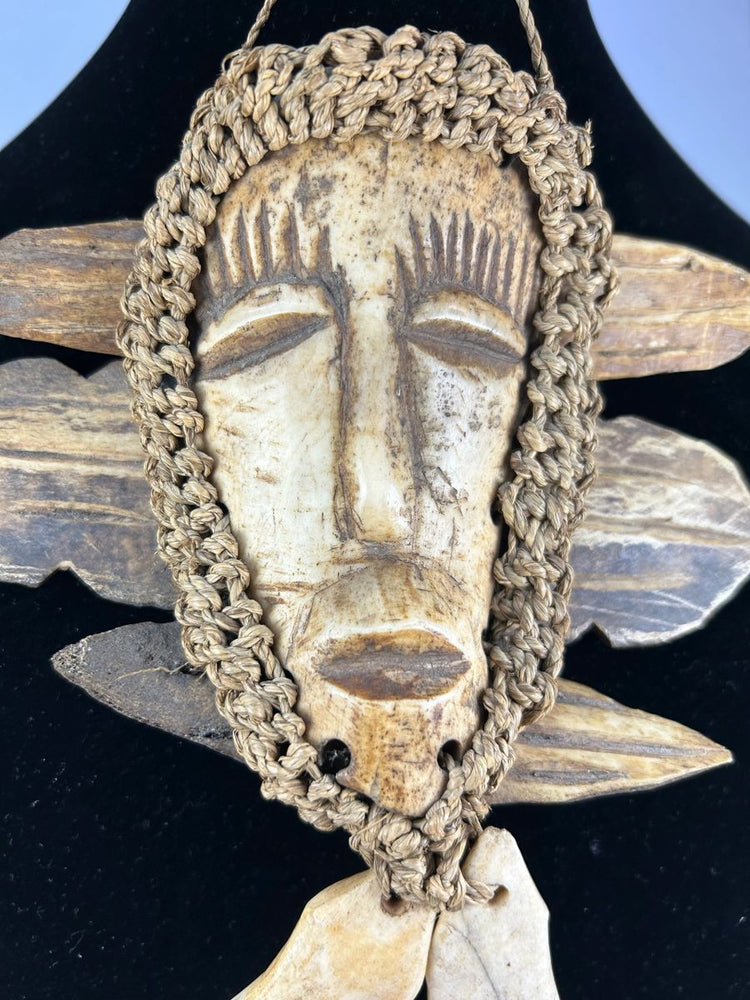Lega Tribal Pendant Mask | Carved Bone & Fiber with Wood Backing | Congo | Mid-20th Century
Description
More
Less
Historical Context & Origin
Region: Democratic Republic of the Congo (Lega People, Kivu region)
Material: Carved bone, natural fiber cord, raffia, and wood backing
Period: Mid-20th century (circa 1950–1970)
Description
This is a striking tribal pendant mask carved in the style of the Lega people of the Congo, known for their distinctive ivory and bone masks used in Bwami society initiation rituals. The face is elongated and minimalist, with pronounced brow ridges, closed eyes, and stylized lips—classic Lega iconography symbolizing wisdom, restraint, and moral clarity. Surrounding the mask is a finely braided fiber collar, with layered bone and wood elements radiating outward like feathers or leaves. Two carved bone pendants hang from the bottom, completing the ritualistic aesthetic. The back is constructed with horizontally arranged, aged wooden blades, suggesting the piece was designed for hanging display or as a status symbol rather than traditional use.
Features
- Expressive hand-carved face in tribal style
- Braided vegetal fiber edging with layered wood backing
- Pair of carved bone pendants suspended at bottom
- Natural wear and patina throughout
- Functional hanging cord for wall or ceremonial display
Cultural Significance
Among the Lega, masks are more than decorative objects—they are sacred teaching devices. In traditional Bwami society, elder members used ivory and bone masks to convey moral lessons and social codes during initiations. While this example may not have been ritually used, it reflects the form and symbolism of authentic Lega ritual carvings, honoring the balance between spiritual guidance and social order.
Condition
Very good vintage condition with minor surface wear and age-related toning to bone and fiber. No visible cracks or losses. Structurally stable and ready for display.
Dimensions (approximate)
Height (including hanging loop): 13 in
Width: 7 in
Age
Mid-20th century (ca. 1950–1970)
Description
Historical Context & Origin
Region: Democratic Republic of the Congo (Lega People, Kivu region)
Material: Carved bone, natural fiber cord, raffia, and wood backing
Period: Mid-20th century (circa 1950–1970)
Description
This is a striking tribal pendant mask carved in the style of the Lega people of the Congo, known for their distinctive ivory and bone masks used in Bwami society initiation rituals. The face is elongated and minimalist, with pronounced brow ridges, closed eyes, and stylized lips—classic Lega iconography symbolizing wisdom, restraint, and moral clarity. Surrounding the mask is a finely braided fiber collar, with layered bone and wood elements radiating outward like feathers or leaves. Two carved bone pendants hang from the bottom, completing the ritualistic aesthetic. The back is constructed with horizontally arranged, aged wooden blades, suggesting the piece was designed for hanging display or as a status symbol rather than traditional use.
Features
- Expressive hand-carved face in tribal style
- Braided vegetal fiber edging with layered wood backing
- Pair of carved bone pendants suspended at bottom
- Natural wear and patina throughout
- Functional hanging cord for wall or ceremonial display
Cultural Significance
Among the Lega, masks are more than decorative objects—they are sacred teaching devices. In traditional Bwami society, elder members used ivory and bone masks to convey moral lessons and social codes during initiations. While this example may not have been ritually used, it reflects the form and symbolism of authentic Lega ritual carvings, honoring the balance between spiritual guidance and social order.
Condition
Very good vintage condition with minor surface wear and age-related toning to bone and fiber. No visible cracks or losses. Structurally stable and ready for display.
Dimensions (approximate)
Height (including hanging loop): 13 in
Width: 7 in
Age
Mid-20th century (ca. 1950–1970)
You May Also Like


























